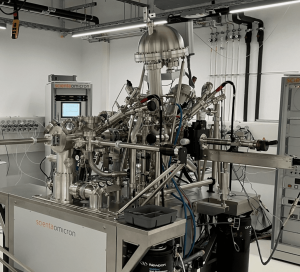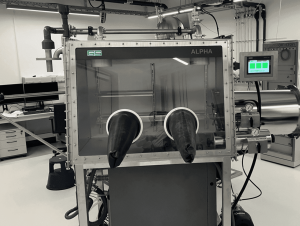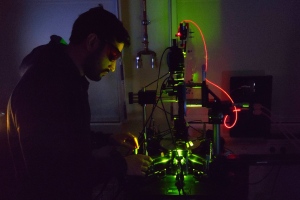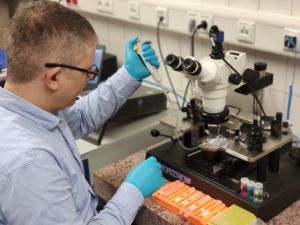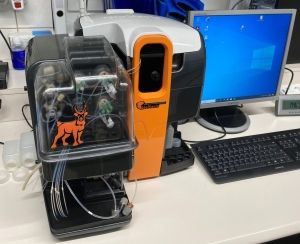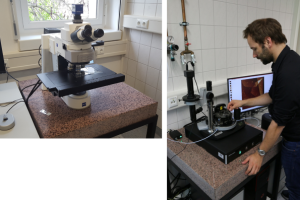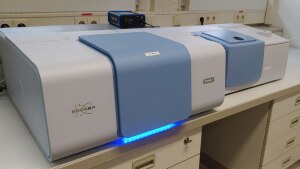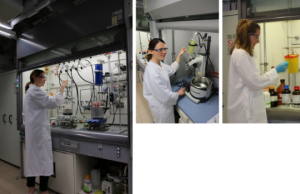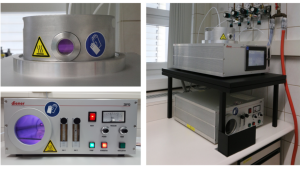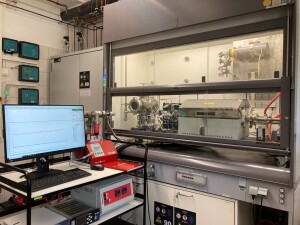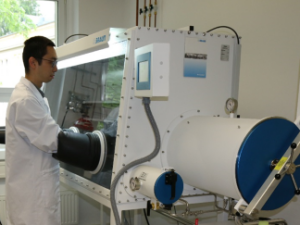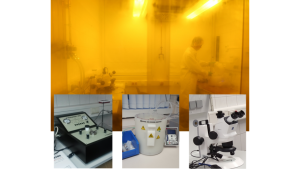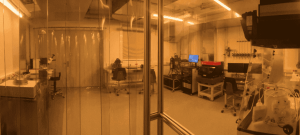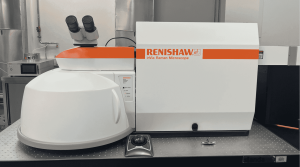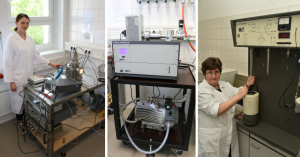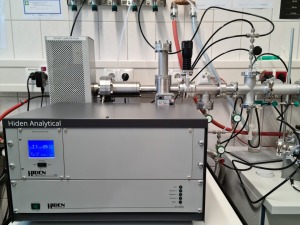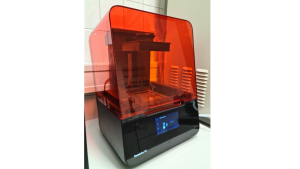Laboratories
Nanosensor Lab Room 138 Telephone: +49 3641 9-48472
Image: Andrey TurchaninMP-SPR Navi™ 210A VASA
- Automated liquid handling of up to 6- different samples for unattended runs
- Partial loop injections enabling minimized sample consumption
- 4 simultaneous measurements in 2 fluidic channels, two independent wavelength measurements from the same spot, enabling detection of thickness and refractive index or conformation changes
- Exceptionally wide angular range 40˚ - 78˚
CVD Lab Room 254 Telephone: +49 3641 9-48471
Image: AG TurchaninSynthesis of 2D transition-metal dichalcogenides by home-built chemical vapor deposition (CVD)
- Three home-built CVD systems: One two-zone and two three-zone furnaces (Ambient and inert conditions)
- Current developed monolayer materials: MoS2, WS2, NbS2, WSe2,MoSe2, NbSe2, MoTe2, 2D lateral heterostructures, wafer-scale MoS2 thin film, etc.
Microfabrication Lab Room 259 Telephone: +49 3641 9-48758
Image: AG TurchaninNano-Plotter (Gesim NP2.1)
- Non-contact automated nanoliter pipetting for precise liquid handling
- Spotting of liquid microarrays with a resolution down to 20 µm
- Optical target recognition capability down to 50 µm
- Automatic sample aspiration
- Automatic wash and dry stations for piezoelectric micropipettes
- Image analysis of droplet dispensing accuracy via stroboscopic video microscopy
- Humidifier
Nanomembrane Lab Room 260 Telephone: +49 3641 9-48751
Image: Vladislav StroganovMass Spectrometer for residual gas analysis
- Designed and sold by Hiden Analytical
- Performs rest gas analysis
- Electron gun ion source, Quadrupole mass analyzer, Faraday cup and electron multiplier detectors
- Sensitivity down to 10-14 mbar
- 9 decades continuous log scale
- Ability to detect external ions
- Possibility to easily modify the "sample" side to fit experimental requirements
- Automated gas sorption analyzer
Nanomembrane Lab Room 260 Telephone: +49 3641 9-48751
Image: Vladislav Stroganov3D Printer
- Form 3 model from Formlabs
- Utilizes stereolithography (SLA)
- Wide selection of printing materials with different mechanical properties and colors
- Chemically resistant materials are also available
- Build volume dimensions: 145x145x185 mm
- Layer thickness - 25-100 µm
- Minimum reliably printed feature size - 1 mm
